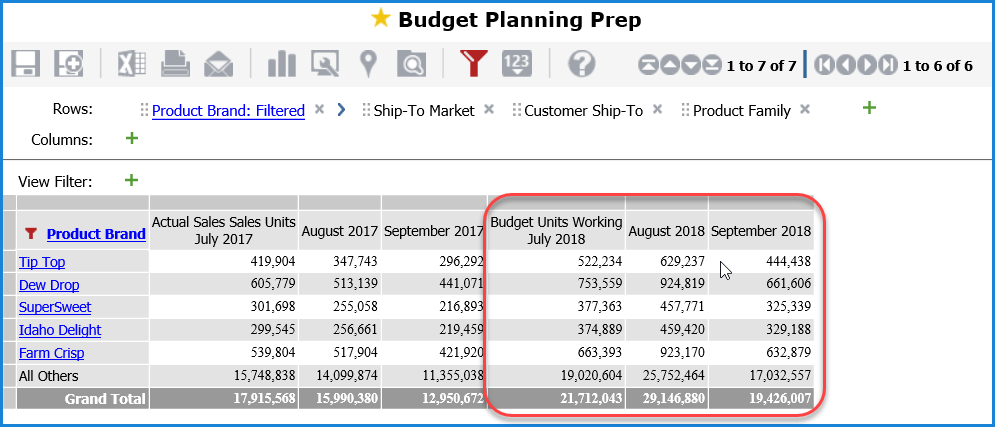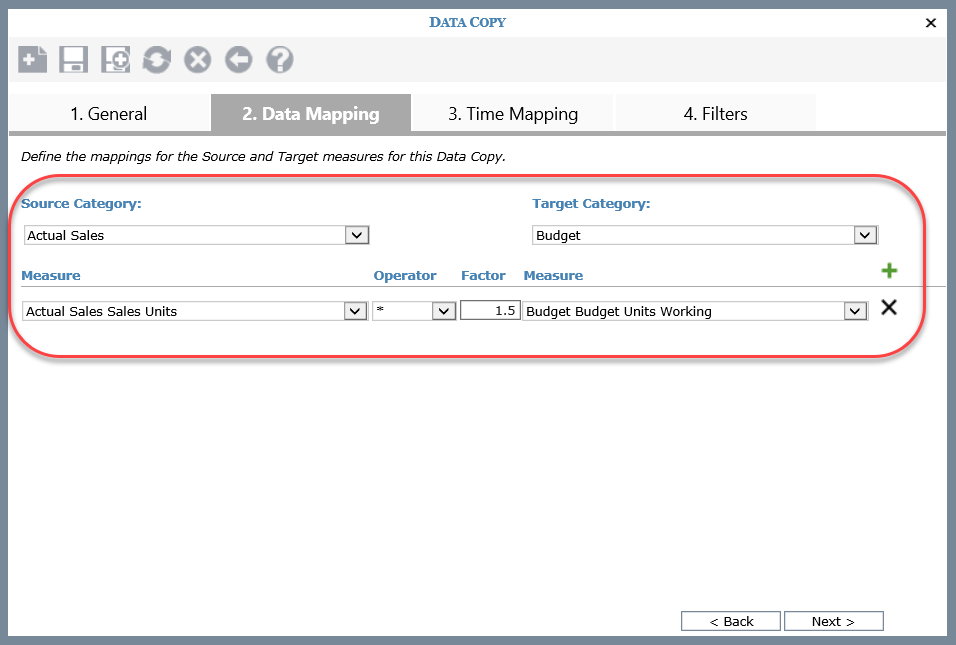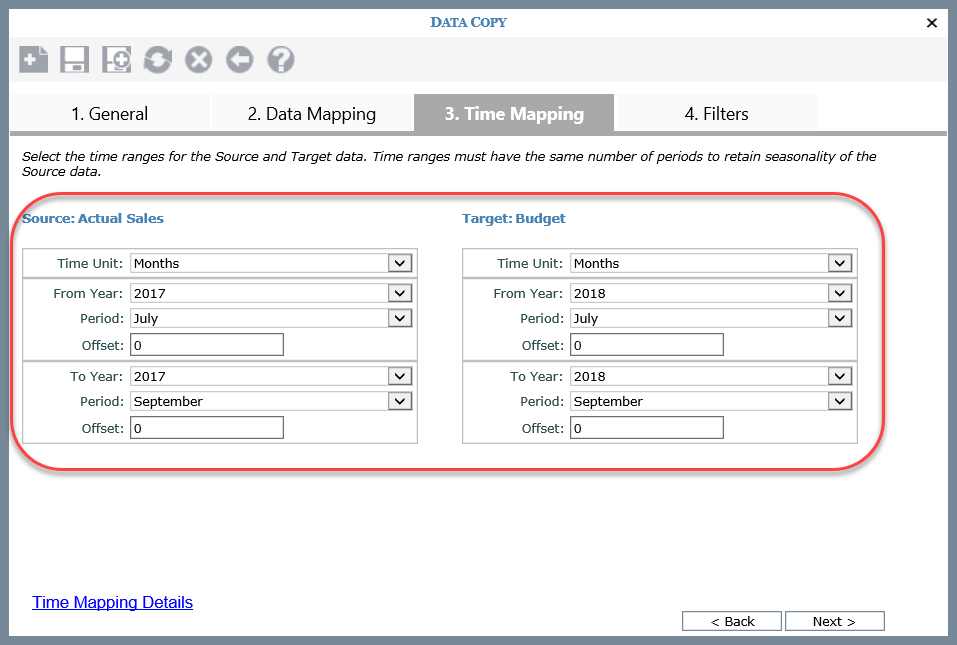
Data copies make it possible to directly copy data from one measure to another. It’s a convenient way for users to control data – they can populate measures that don’t have data yet and either add to or replace data for measure items with existing data. Time properties in data copies are used to pinpoint the period to copy from and copy into – for example, copy from/to a single period or copy from/to multiple periods in a given time range. And, you can multiply, divide, subtract from, or add to the source data during the process of copying it to the target measure that’s the destination for the data copy. A filter feature adds to data copy flexibility, allowing you to copy from and to a smaller, specific segment of data for a measure.
In this example, a user kicked off some budget planning by using actual sales data as their starting point. The data copy shown in the second image took data from the prior year’s actual sales, multiplied the data by a factor of 1.5, and then populated Budget Units Working with the results. This sets up a base budget that the user can fine-tune during their planning process.

Data mappings define where to copy data from (the Source data), where to copy the data to (the Target data), and how to treat the data during the copy. This data copy multiplies the sales data by 1.5 before copying it to budget data.

Time mappings identify the period of time to copy data from and to. In this case, data is copied from three months of the previous year to the same three months in the current year.
